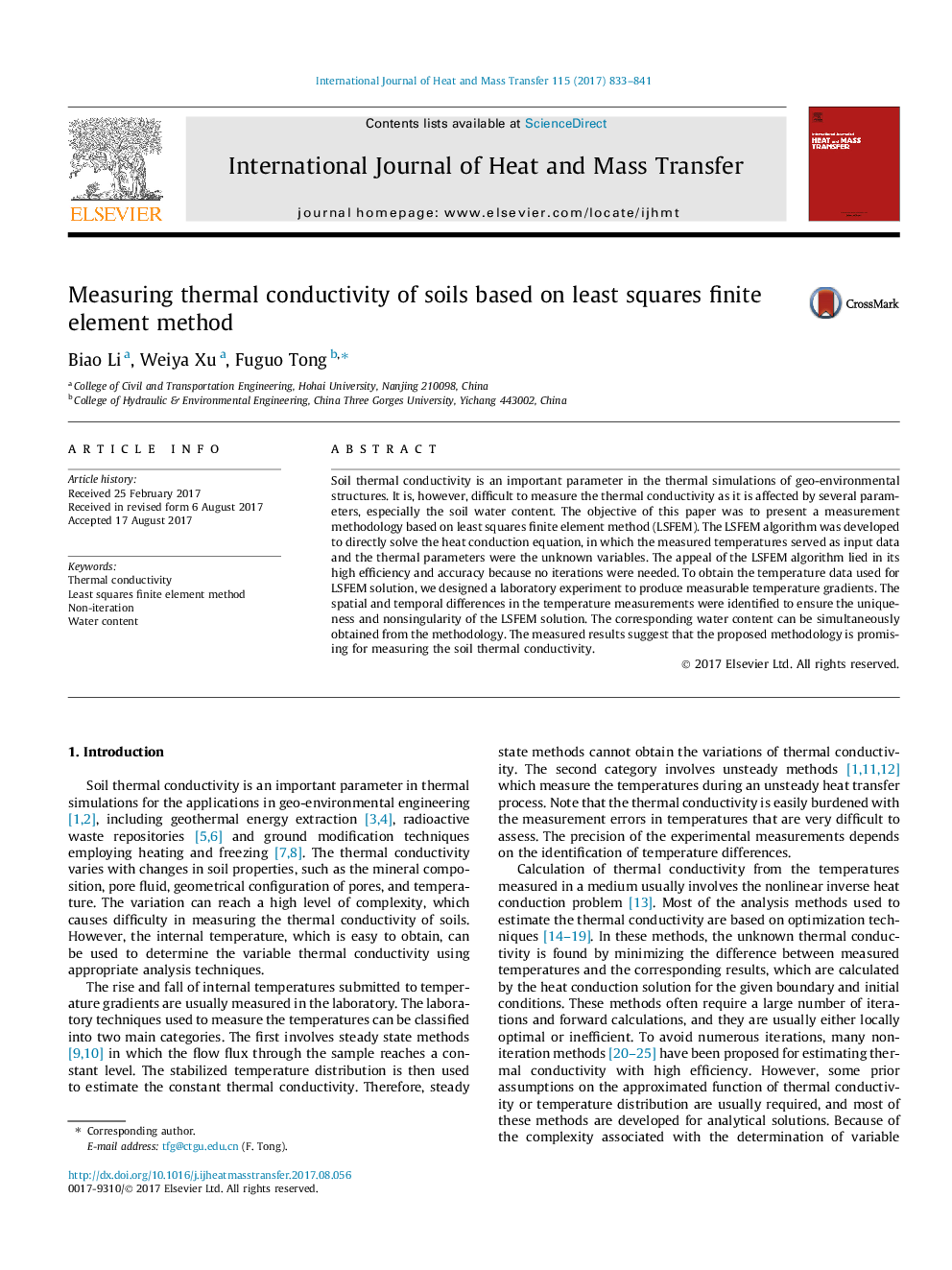| Article ID | Journal | Published Year | Pages | File Type |
|---|---|---|---|---|
| 4994015 | International Journal of Heat and Mass Transfer | 2017 | 9 Pages |
Abstract
Soil thermal conductivity is an important parameter in the thermal simulations of geo-environmental structures. It is, however, difficult to measure the thermal conductivity as it is affected by several parameters, especially the soil water content. The objective of this paper was to present a measurement methodology based on least squares finite element method (LSFEM). The LSFEM algorithm was developed to directly solve the heat conduction equation, in which the measured temperatures served as input data and the thermal parameters were the unknown variables. The appeal of the LSFEM algorithm lied in its high efficiency and accuracy because no iterations were needed. To obtain the temperature data used for LSFEM solution, we designed a laboratory experiment to produce measurable temperature gradients. The spatial and temporal differences in the temperature measurements were identified to ensure the uniqueness and nonsingularity of the LSFEM solution. The corresponding water content can be simultaneously obtained from the methodology. The measured results suggest that the proposed methodology is promising for measuring the soil thermal conductivity.
Keywords
Related Topics
Physical Sciences and Engineering
Chemical Engineering
Fluid Flow and Transfer Processes
Authors
Biao Li, Weiya Xu, Fuguo Tong,
